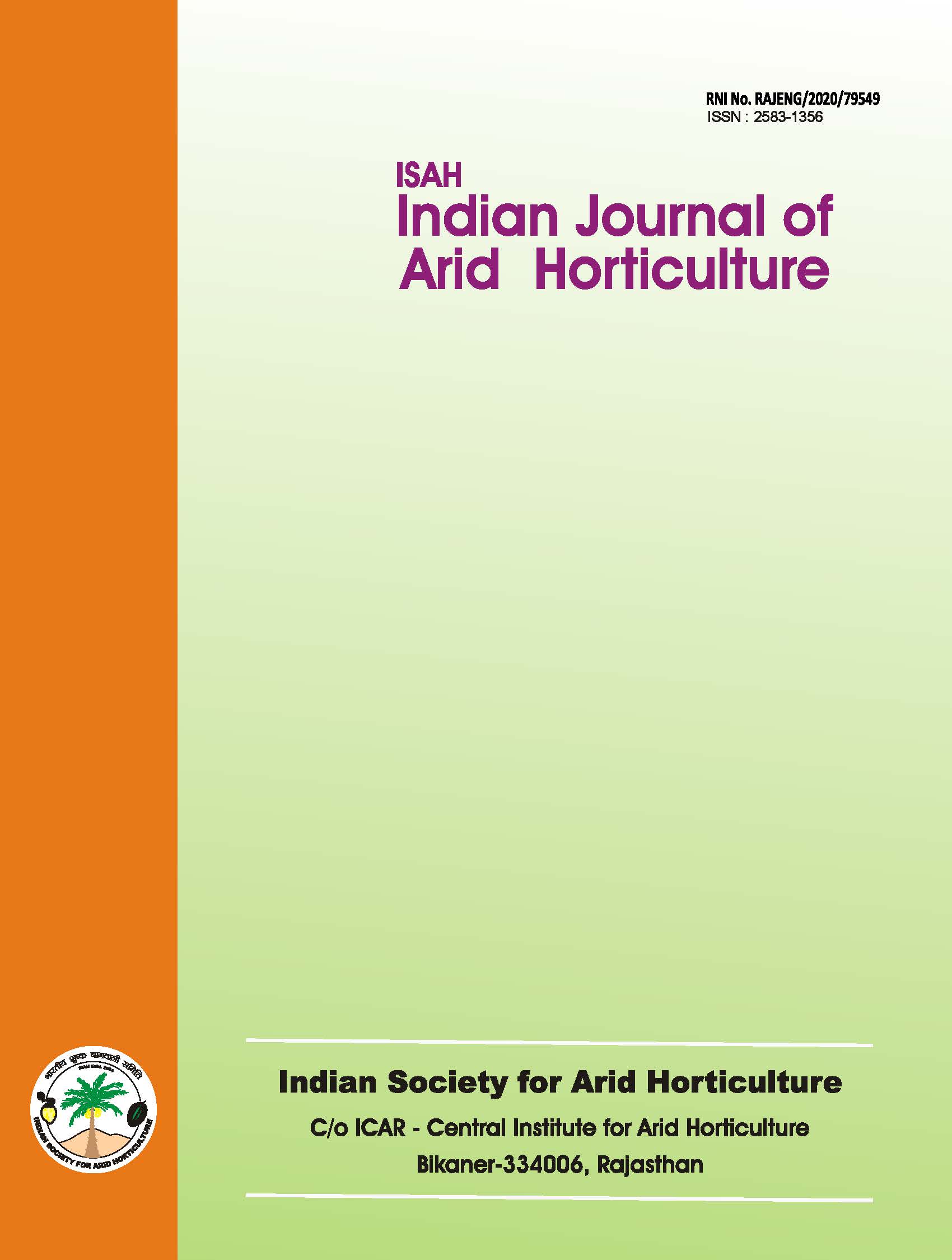Physiological traits of Kinnow mandarin under Drip irrigation system
Keywords:
Kinnow, photosynthesis, carboxylation efficiency, stomatal conductanceAbstract
Variation in plant environmental factors of Kinnow mandarin for at Agriculture Research Station, SriGanganagar district of Rajasthan state in India with respect to three differential irrigation treatments revealed that overall maximum carboxylation efficiency (A) was estimated in 70% Etc treatment from April to June with a linear trend and showed depression in September and October followed by a steady rise in November and December months. Stomatal conductance revealed oscillating trend being maximum in 70% Etc treatment for April and May months followed by steep rise in 40% Etc treatment for June-July months and remained static in August and September, a trend reversal in October-November with maximum stomatal conductance in 100% Etc treatment with a slight compared to 70% Etc. The cumulative overall high stomatal resistance in 40% treatment might have attributed to low photosynthetic rates followed by 100% treatment and the better assimilation rates under 70% treatment are correlated with low rates of stomatal resistance. The daily course of transpiration in all the three irrigation treatments does not closely linked to solar irradiation but rather to leaf temperature. Temperatures of 25-30°C are optimal for photosynthesis but temperatures above 30°C definitely reduce photosynthetic activity. The annual trend for three consecutive years' data revealed occurrence of cyclic oscillations in photosynthesis. stomatal conductance, stomatal resistance, transpiration rate and photosynthetic active radiation under field conditions. Citrus belong to C, plants, with photosynthetic rates lower than C, plants. Assimilation rates ranging from 1.28 to 7.93 mmolm's observed under differential irrigation treatments seem realistic under optimal irrigated conditions of Western Rajasthan.Downloads
References
Flore, J.A. and Lakso, A.N. 1989. Environmental and physiological regulation of photosynthesis in fruit crops; Hortic Rev. 11:111-157. Maroco J.P, Pereira J.S and Manuela Chaves M. 1997. Stomatal response to leaf to air vapour pressure
deficit in Sahelian species; Aust J Plant Physiol. 27:381-387.
Kriedemann, P.E. and Barrs, H.D. 1981. Citrus orchards. In water Deficits and Plant Growth. Vol.6, ed. T.T. Kozlowski, pp: 325-417.
Sinclair, T.R. and Allen, L.H. Jr. 1982. Carbon dioxide and
water vapour exchange of leaves on field grown citrus trees. Journal of Experimental Botany. 33:1166-1175.
Vu, J.C.V. and Yelenosky, G. (1988). Solar irradiance and drought stress effects on the activity and concentration of ribulose biphosphatase carboxylase in 'Valencia' oorange subjected to water deficits. Environ. Expt. Bot., 29:149-154.

